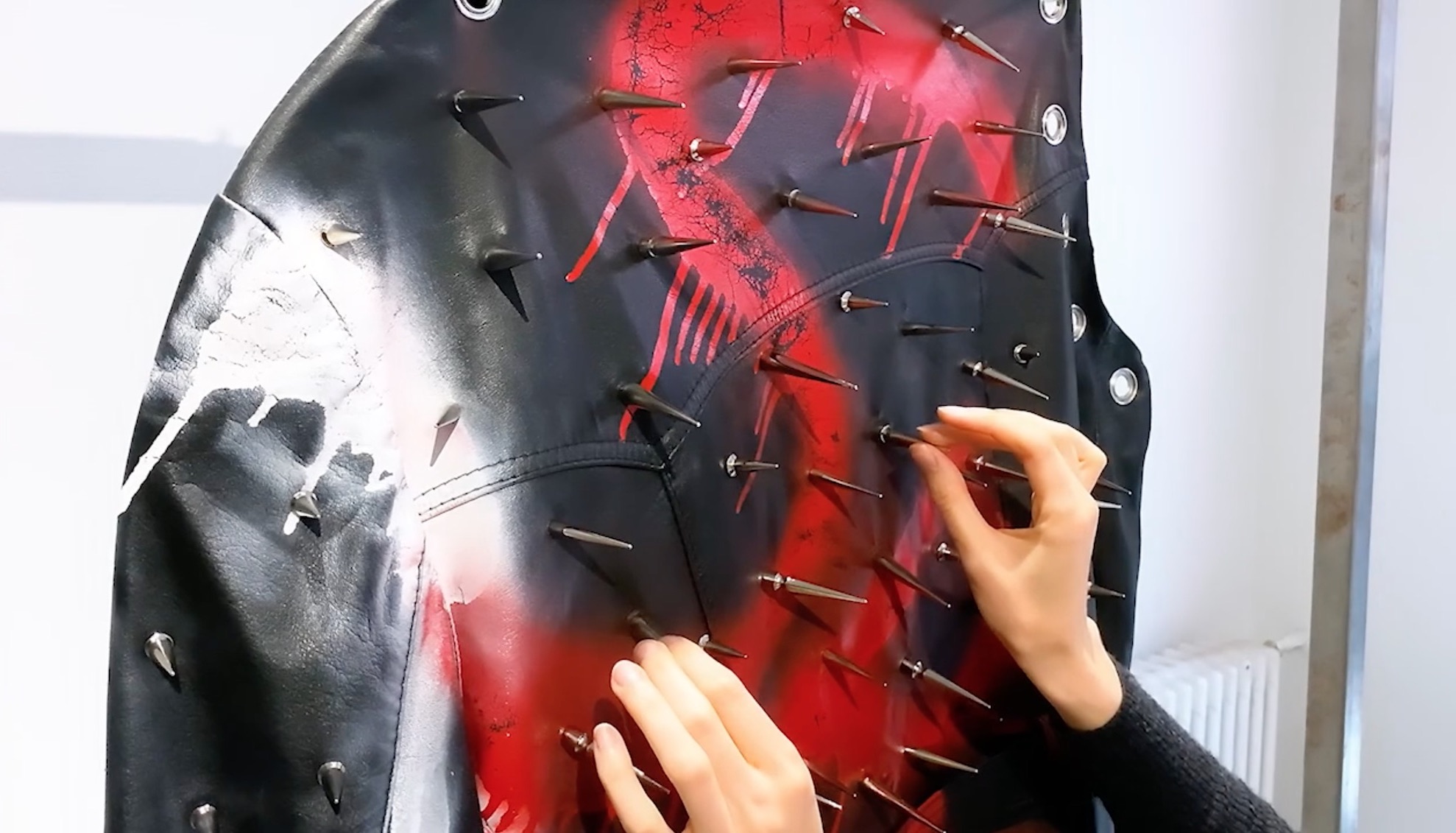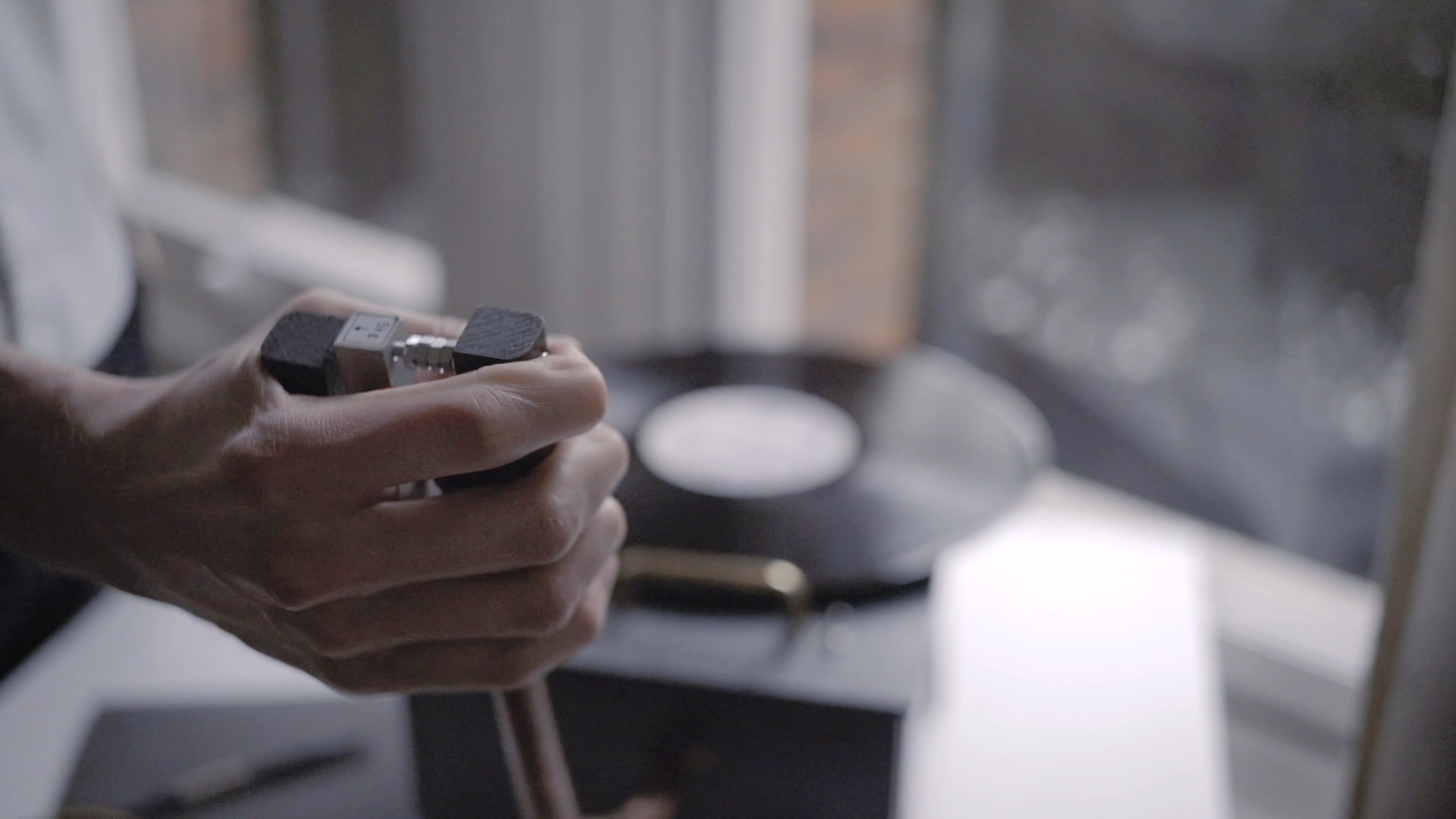Audio Igloo
A shelter for homeless loudspeakers
Audio Igloo (Lost & Found Festival, Nürnberg 2021) gives a home to hundreds of discarded loudspeakers to create a place of intimate listening and reflection on the ever-advancing march of consumption. This interactive installation was created by Paul Biessmann and Benoît Maubrey who will tell us more about it in this post.
A place for sonic reflection
Many aspirations of sustainability and environmental protection have been forgotten again since the beginning of the pandemic. Life takes place in the closest circle and closes itself off to the outside world. There are hardly any encounters with strangers anymore. It is safer to travel in your own car than by public transport, and since there is so much time on your hands, you might as well order new loudspeakers or a better cell phone.
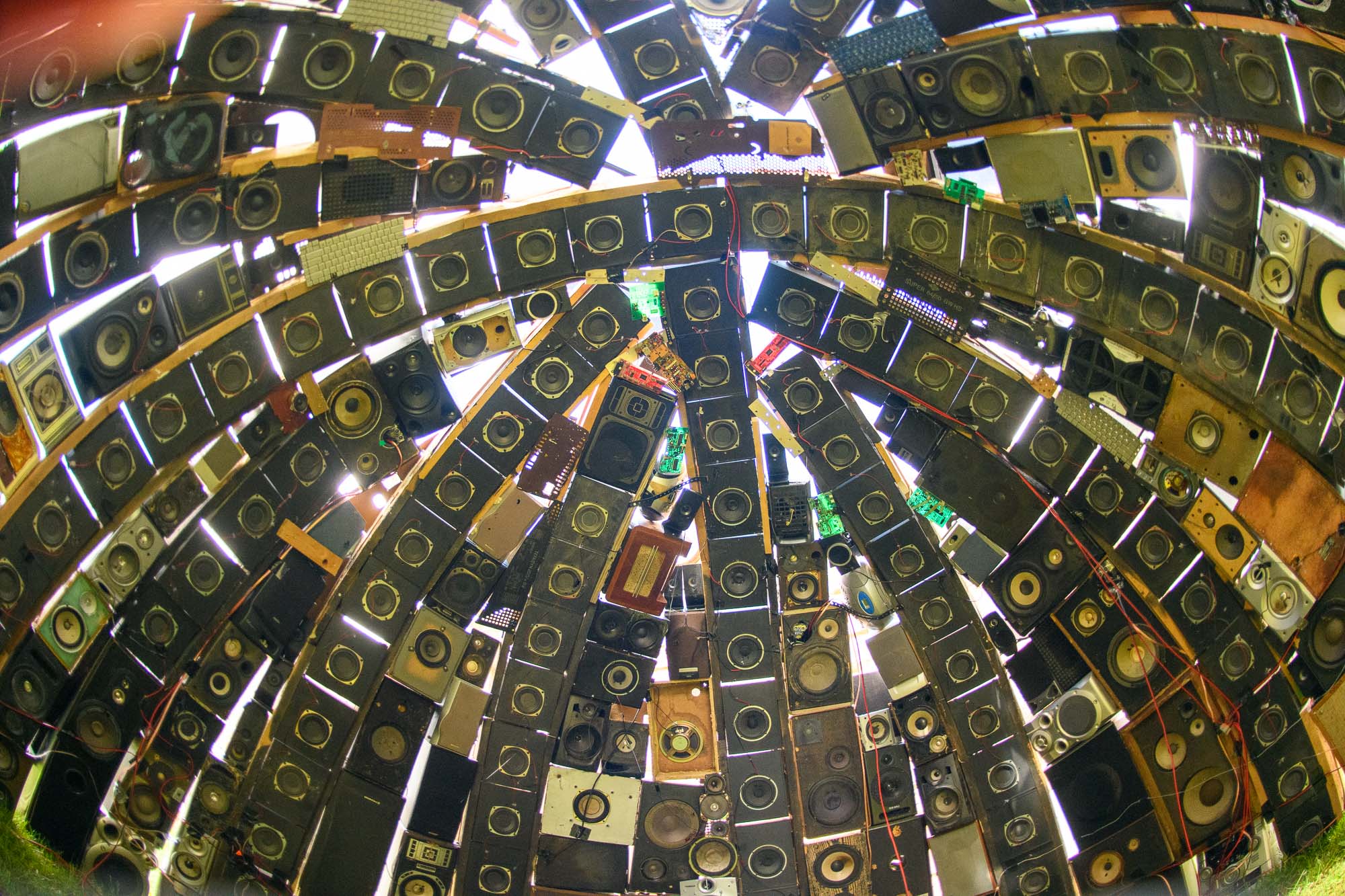
The Audio Igloo responds to the current situation and is made of 300 recycled speakers and electrical parts - the leftovers of our consumption. The sculpture by Benoît Maubrey creates an intimate atmosphere and allows listeners to experience the multi-layered sounds of countless discarded membranes.
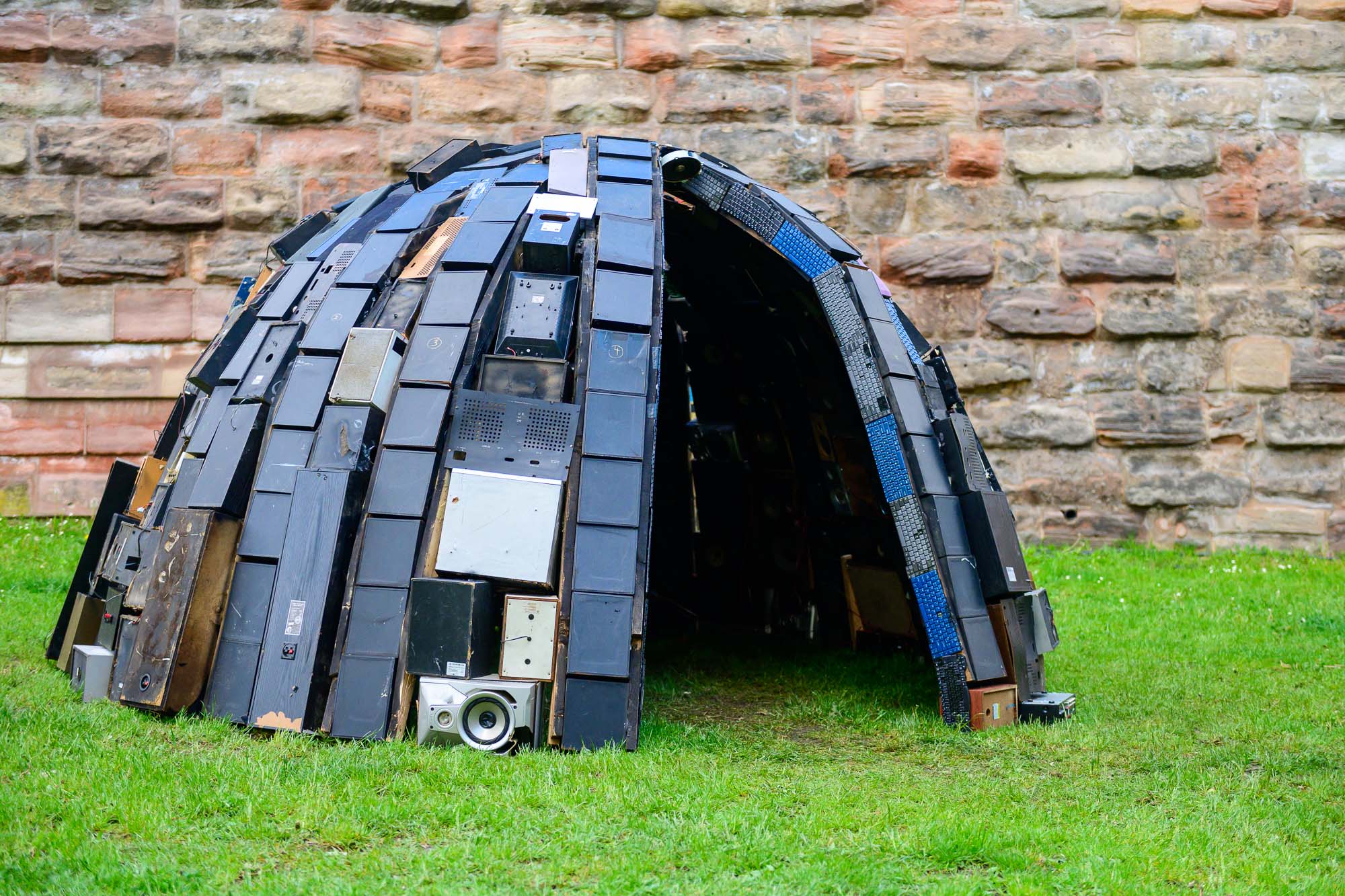
On the inside of the Igloo the interactive sound installation by Paul Biessmann converts the movements of the visitors into music. The installation creates connections between visitors and the sound machine which can be discovered in a playful way. A sound sphere which enables contact despite the distance.
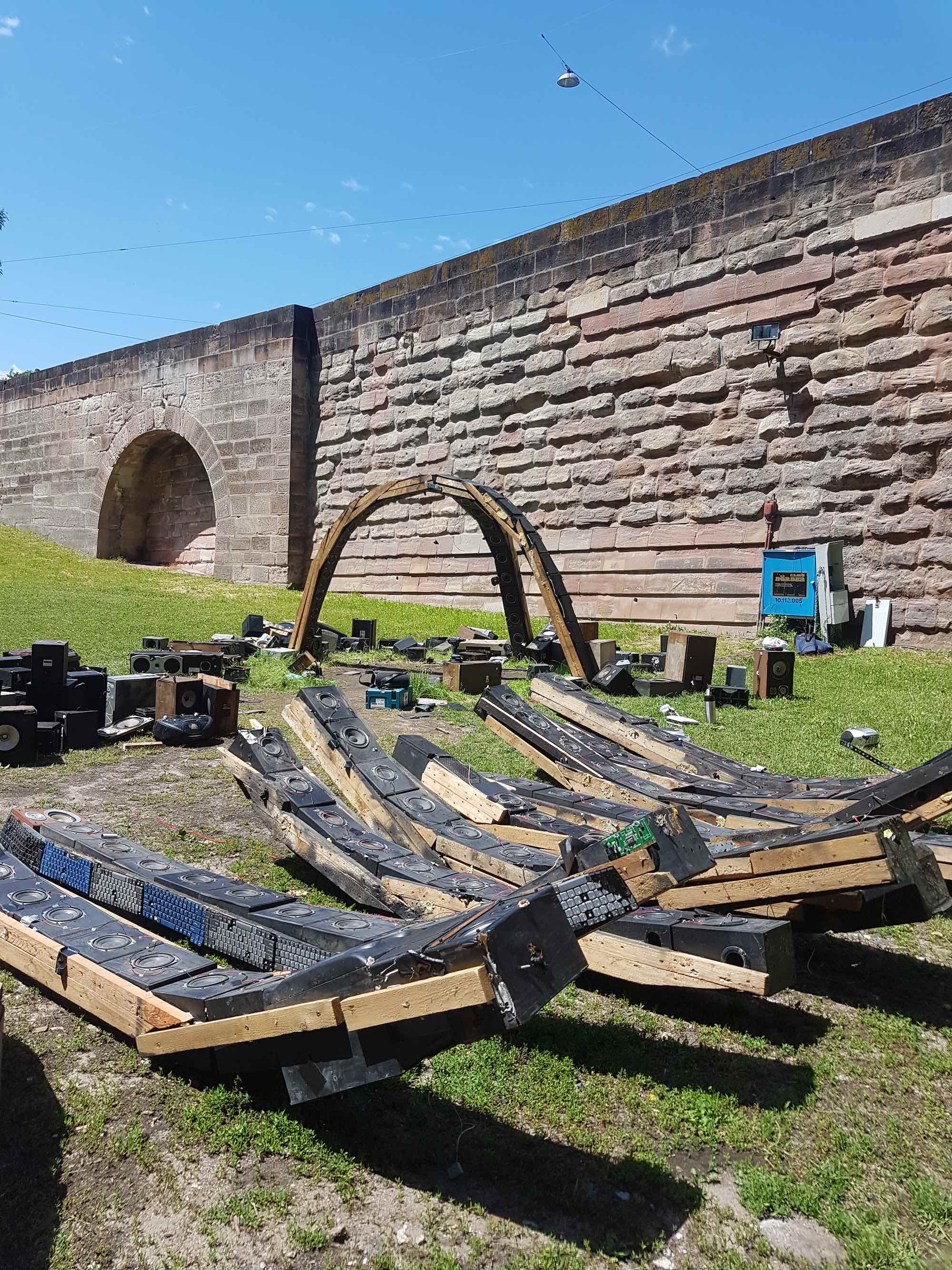
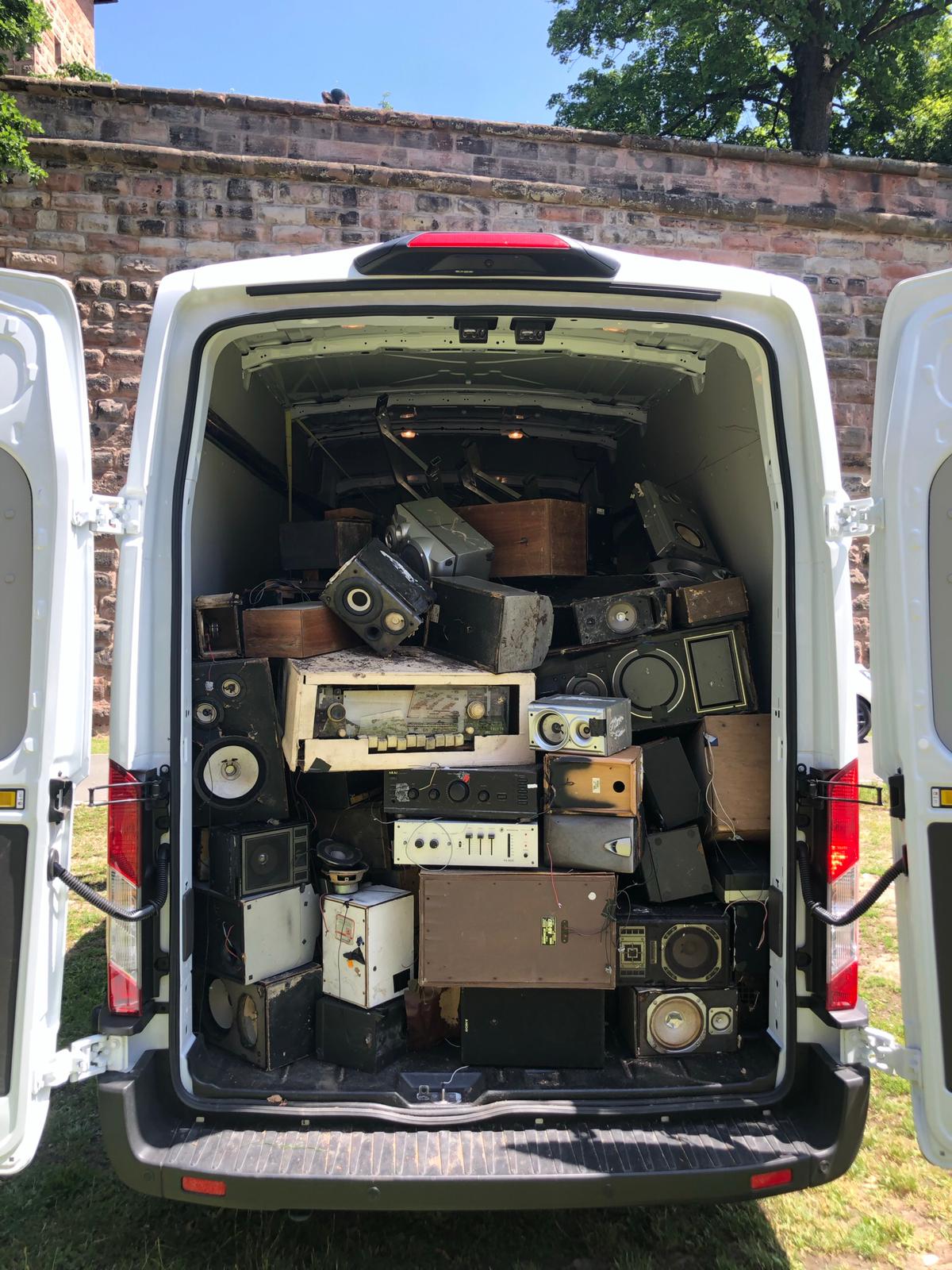
The Audio Igloo in construction.
The Audio Igloo acts as a shelter for homeless loudspeakers, a stage for the seemingly unusable and a place to discover.
The inner workings
Hidden inside of the igloo are 6 ultrasonic distance sensors which control a Pure Data patch running on a Bela. Paul built a generative music system which is altered by the visitors. Some sensors can be understood easily, e.g. a white noise, that gets louder/LPF opens, others are more subtle - a melody, that gets faster when you approach, from quarter over triplets to sixteenth. Or a wind chime like sound, that gets more dense when the visitor approaches.
In the music there are some chord progressions, bass lines and melodies given, but there is a probability setting which decides to jump over notes or when to change a chord. This probability changes with the movements of the audience. So you get immersed by sound, but always can alter it in a knowing or unconscious way. You can just stand there and listen to small changes that develop over time, or you can get active and search for the sensors to actively control your sound space.
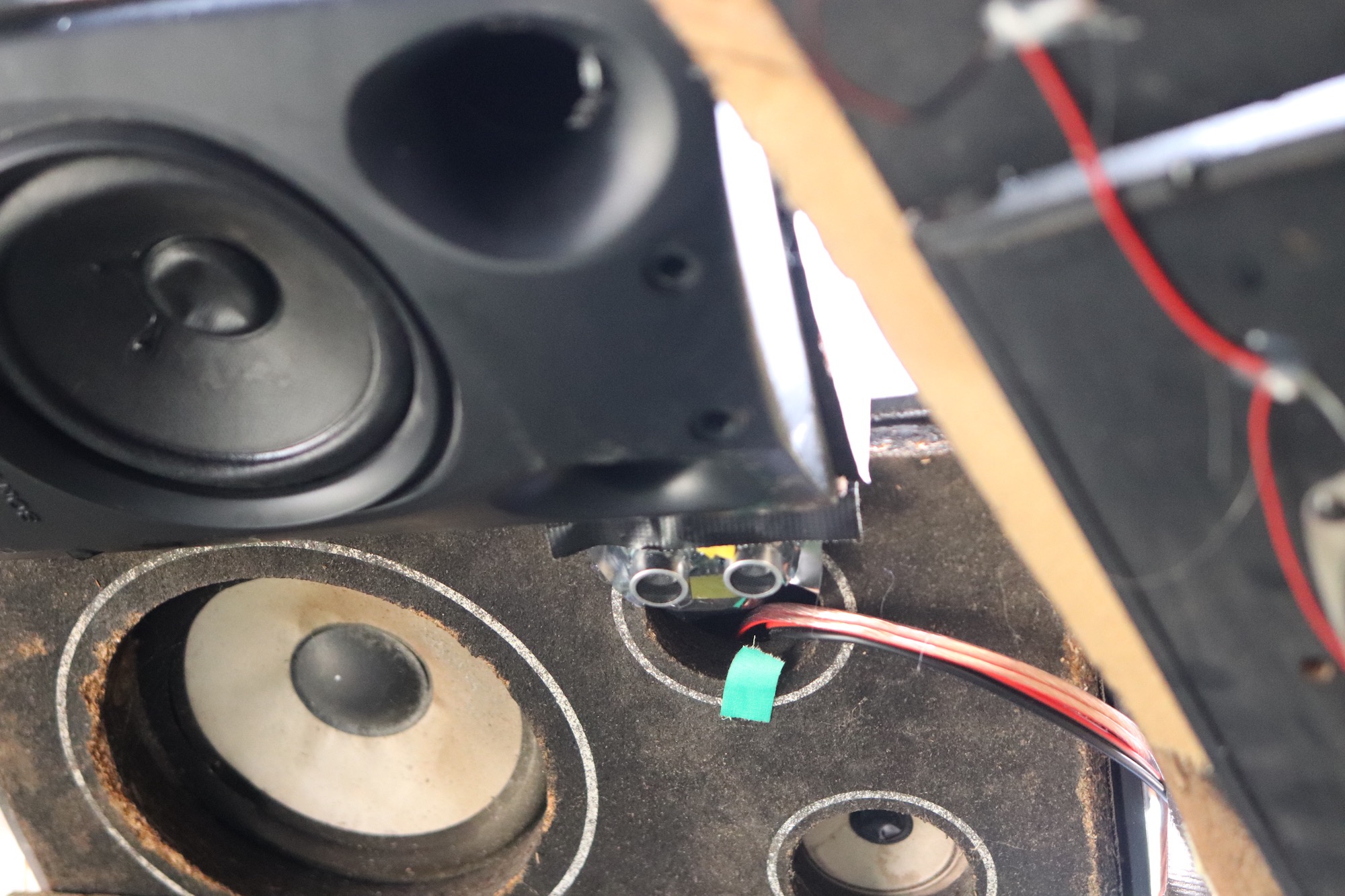
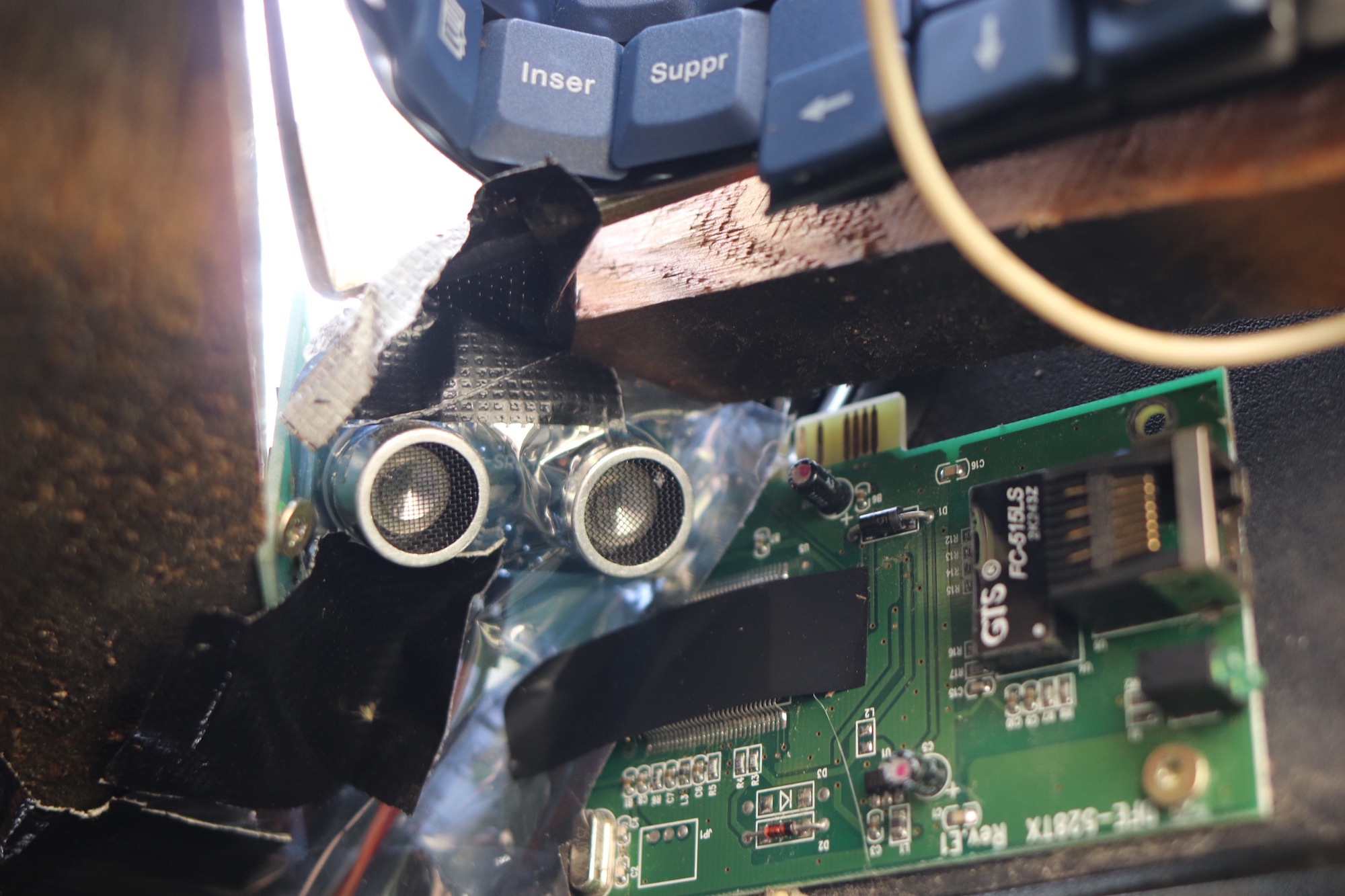
The distance sensors hidden around the Igloo.
The sensors are also placed in different ways. One points out of the entrance, so you get a welcoming sound. Some show directly in the middle to be found easily, for some you have to walk very close to the speakers and one is mostly triggered by children or dogs.
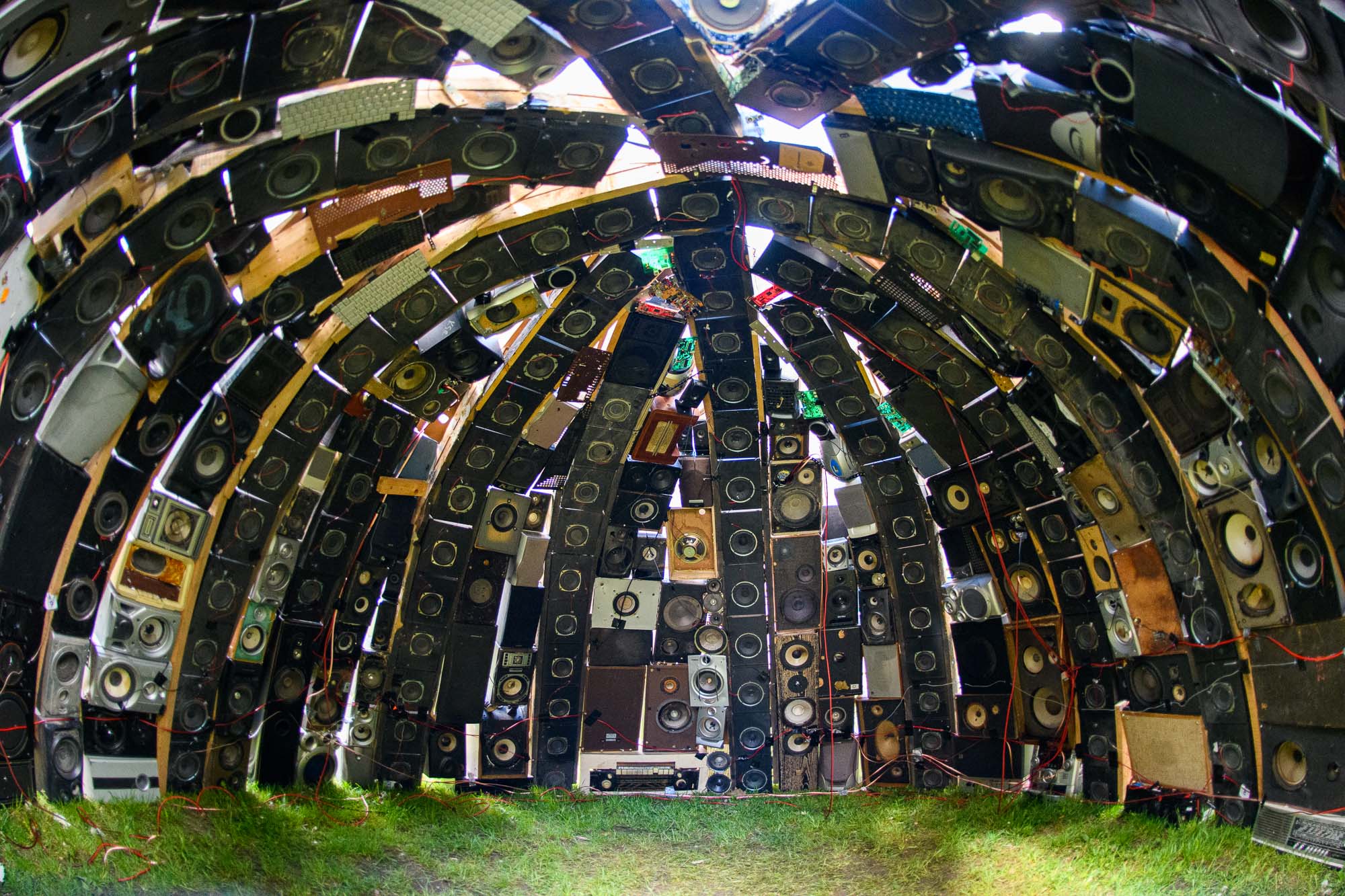
During the installation it was very interesting to see the different reactions of the visitors. Children had fun to play around as well as adults. Some just listened calmly to it, some wanted to understand everything.
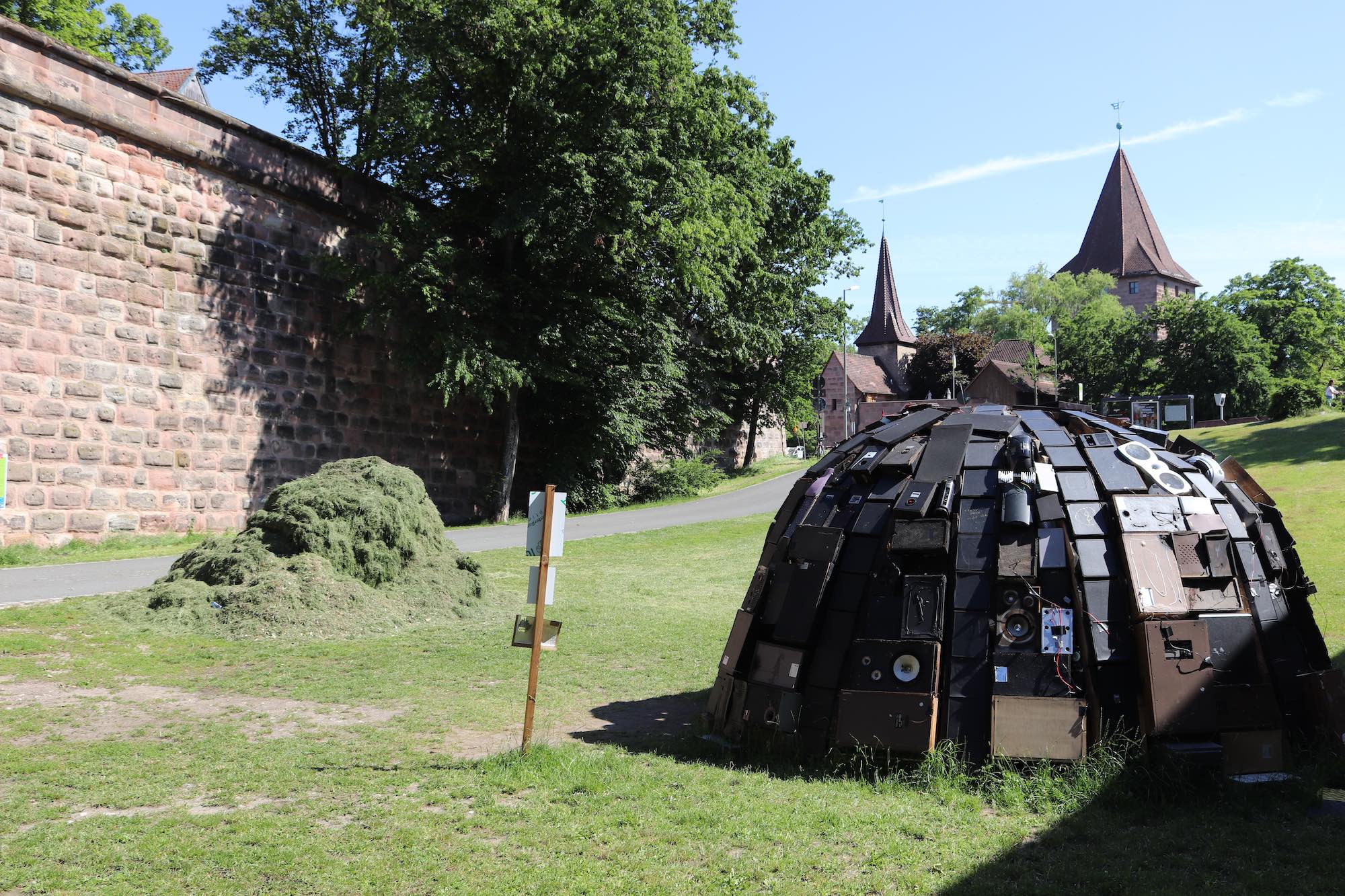
The installation was part of a public art exhibition by the city of Nuremberg Germany from 16.May-20.June 2021. It was only turned off during the night, otherwise it was working for 5 weeks the whole day with sun or rain.
About the creators
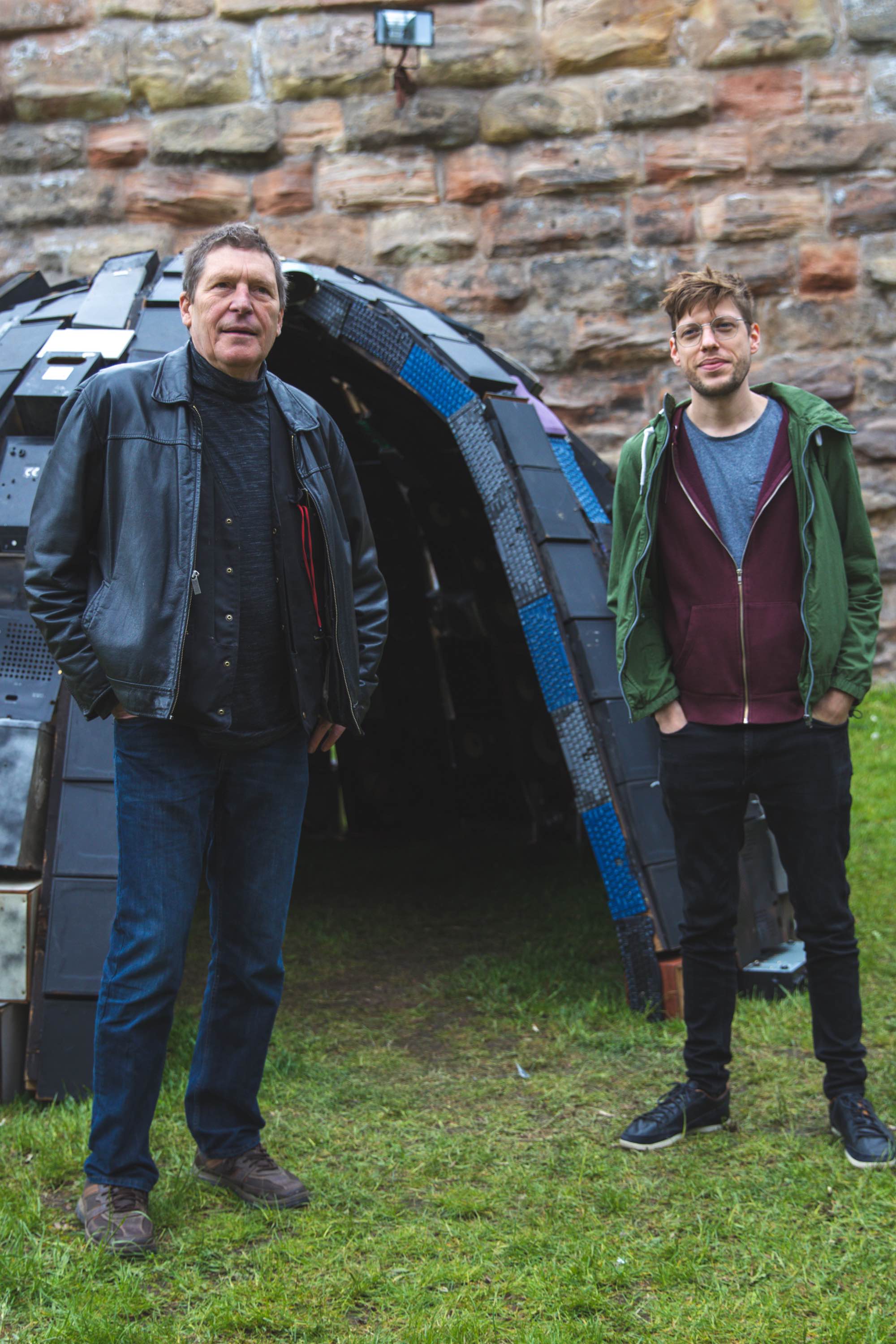
Paul Biessmann works at the intersection of technology and the arts, looking for new ways to combine them. His work ranges from composing and producing music, improvising with acoustic and electronic instruments, building machines with Arduino, water, rubbish, textiles to programming interactive live visuals.
Benoît Maubrey creates electroacoustic sculptures and is the director and founder of DIE AUDIO GRUPPE, a Berlin-based art group that build and perform with electronic clothes. Basically these are electro-acoustic clothes and dresses (equipped with amplifiers and loudspeakers) that make sounds by interacting thematically and acoustically with their environment. In his non-mobile sculptural work he frequently uses former public (discarded) monuments and recycles them using modern technology and electronics. Recycled and “found” electronics as his artistic medium. Since 1982 he has been conceiving and creating interactive sculptures in public spaces. In most cases the sculptures interact with their environment: quite often they function as “Speakers Corner” where the public can express themselves “live”.



